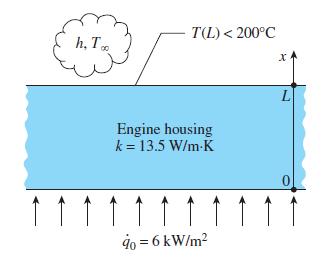The outer surface of an engine is situated in a place where oil leakage can occur. Some
Question:
The outer surface of an engine is situated in a place where oil leakage can occur. Some oils have autoignition temperatures of approximately above 250°C. When oil comes in contact with a hot engine surface that has a higher temperature than its autoignition temperature, the oil can ignite spontaneously. Treating the engine housing as a plane wall, the inner surface (x = 0) is subjected to 6 kW/m2 of heat. The engine housing (k = 13.5 W/m ∙ K) has a thickness of 1 cm, and the outer surface (x = L) is exposed to an environment where the ambient air is 35°C with a convection heat transfer coefficient of 20 W/m2 ∙ K. To prevent fire hazard in the event the leaked oil comes in contact with the hot engine surface, the temperature of the engine surface should be kept below 200°C. Determine the variation of temperature in the engine housing and the temperatures of the inner and outer surfaces. Is the outer surface temperature of the engine below the safe temperature?
Step by Step Answer:

Heat And Mass Transfer Fundamentals And Applications
ISBN: 9780073398181
5th Edition
Authors: Yunus Cengel, Afshin Ghajar





